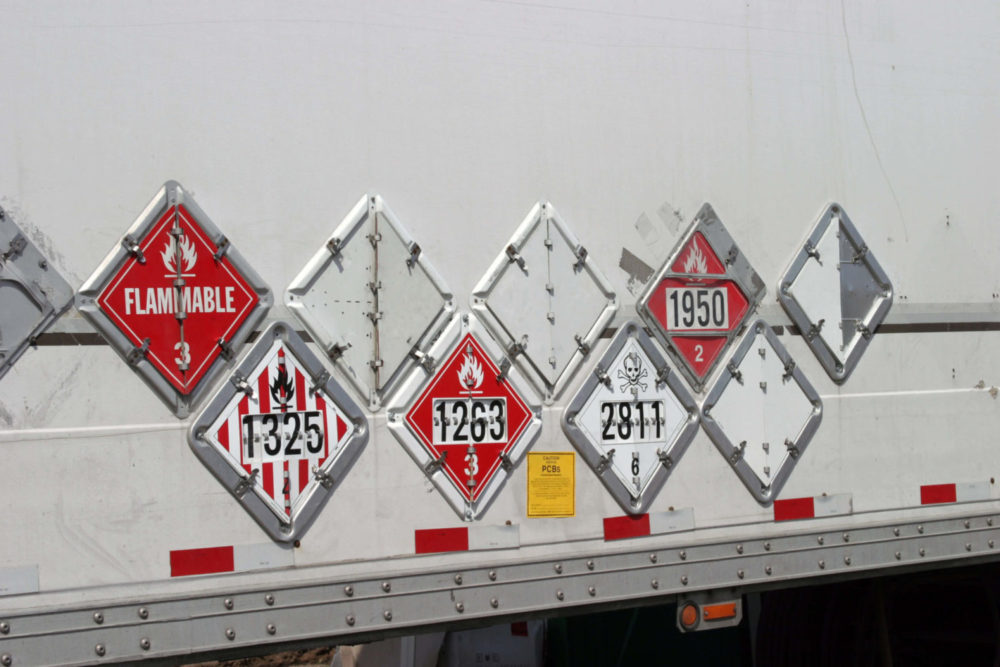Statistics reveal that nearly 3 billion tons of hazardous material are transported in the US every year. Interestingly, most of these materials are transported with the help of trucks. Although these trucks are equipped to safely transport hazardous substances, there’s still a chance you can get into an accident.
Since many of these substances are toxic or flammable, you must ensure they’re safely transported. We will mention some of these tips for your guidance and help you maximize protection against any unwanted incidents.
Tips for Transporting Hazardous Materials
The following are some of the best tips for transporting hazardous materials.
Use Proper Safety Equipment
Risk-reducing equipment is the first thing you should consider to ensure better safety from hazardous materials. You should choose the right personal protection equipment depending on what type of product you’re handling.
These products have safety data sheets that help the drivers stay secure while handling these hazardous materials. This applies especially to toxic or flammable products.
Train Your Drivers
There are various important decisions that drivers need to make in the event of a dangerous incident. Therefore, truck drivers hauling hazardous materials must be properly trained and have extensive knowledge regarding the safe transport of these items.
Your drivers should know how to store and safely transport these materials to avoid any contaminations, exposures, leaks, and more. These drivers should also know how to neutralize these hazardous materials if they were to get into an accident or any other dangerous situation.
It’s okay if you can’t find drivers who’ve already been trained on transporting hazardous materials because you can always educate them. Such as, you can include simple yet interesting training sessions and hypothetical case training to ensure your drivers are ready to tackle any issues that come up.
Classify Goods into Categories
While all hazardous materials are a big safety concern, some are less dangerous than others. Therefore, it’s best to classify these products and take necessary protective steps for each accordingly. A common generalization of these categories could look something like the following:
- Arsenic
- Benzene
- Chromium
- Lead
Similarly, you can categorize whatever you’re carrying based on their hazard levels.
Display Necessary Safety Information on the Containers
It’s wise to add additional information about each of the hazardous products you’re carrying inside the vehicle. This information can help remind you and others of the various precautions that need to be taken. Such as, some materials may be flammable, toxic, or need to be kept at a certain temperature.
Luckily, there are various warning and danger signs that you can stick onto these containers and on the outside of your truck.
Keep a Fire Extinguisher Onboard
You can never be too careful while carrying hazardous materials in your vehicle. You should always have preventive tools and essentials regardless of how secure the hazardous goods are. There are various items you can carry in your truck as a preventative measure.
Therefore, it’s wise to keep a couple of fire extinguishers in your truck at all times. This is because most of these products are highly flammable and can cause extensive damage to you, your truck, and those around you.
Bottom Line
Transporting hazardous materials is a serious concern because these products can be harmful to everyone around them. Therefore, you should ensure you carry safety equipment, add warning/danger stickers to your truck, classify the goods, train your drivers, and carry the right equipment.
Sources
https://www.nibusinessinfo.co.uk/content/how-transport-hazardous-substances
https://mlienvironmental.com/blog/shipping-hazardous-materials-best-practices/
https://www.interlogusa.com/answers/blog/best-practices-shipping-hazardous-materials/


